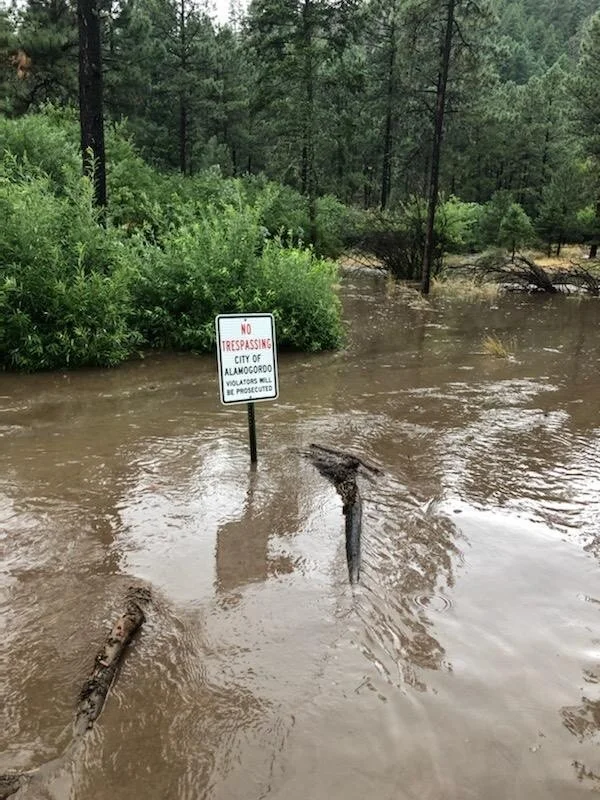
Lincoln National Forest Land Management Plan Revision and Environmental Impact Statement
Climate Change
Pine Lodge Fire July 2019
Monjeau Peak after the Little Bear fire
2020 flash flood on the Smokey Bear Ranger District
Smoke above mountain landscape
What we heard from the public
Climate change intensifies the adverse impacts associated with roads. The Forest Service should analyze the cumulative impacts of forest roads and climate change. The need to evaluate climate change impacts is bolstered by the fact that "the harms associated with climate change are serious and well recognized," and environmental changes caused by climate change "have already inflicted significant harms" to many resources around the globe.
Climate change is also expected to lead to more extreme weather events, resulting in increased flood severity, more frequent landslides, altered hydrographs, and changes in erosion and sedimentation rates and delivery processes.
Plan components must be designed "to maintain or restore the structure, function, composition, and connectivity" of terrestrial, riparian, and aquatic ecosystems, id. § 219.8(a)(1) & (a)(3)(i); must take into account stressors including climate change, and the ability of ecosystems to adapt to change, id. § 219.8(a)(1)(iv); and must implement national best management practices for water quality, id. § 219.8(a)(4).
Draft Land Management Components
All Vegetation Types
Guideline
Activities should provide resiliency against potential climate changes by promoting early seral tree species regeneration and identifying and maintaining refugia in cooler moister microsites.
Mixed Conifer-Frequent Fire Forest
Desired Condition
The composition, structure, and function of vegetation conditions are resilient to the frequency, extent, severity of disturbances, and to climate variability.
Soil Resources
Desired Condition
Soil organic carbon represents reference conditions for a given ecological response unit, but are transitory and adaptive with site potential, characteristic disturbances, and long-term trends in climate.
Terrestrial (aka Land) Species
Management Approach
During project planning, consider mitigations to wildlife and plant habitat resulting from the effects of long-term and short-term climate fluctuations (drought, El Niño Southern Oscillation, global climate change, etc.), and subsequent effects of management activities.
Forest Products
Guideline
In areas identified as having high vulnerability to changing climate patterns, project planning should consider alternatives to mitigate potential climate change effects.
Range
Desired Condition
Rangelands are resilient to disturbances and variations in the natural environment (fire, flood, climate variability, etc.).
Proposed Research Natural Area
Desired Condition
Research natural areas remain a baseline for ecological processes, including succession. They serve as a baseline for actively studied ecosystems, measuring ecological change from disturbances or stressors like climate change.
Next Station: How to Comment
For more information on the Project or to be added to the mailing list, please contact Diane Prather at (575-649-9405) or diane.prather@usda.gov.





